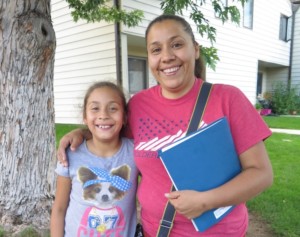Introducing the Texas Learning Exchange School Operations Guide

Schools from El Paso to Dallas and Amarillo to San Antonio, have been working to create the safest and most engaging back to school experience on multiple fronts: physical safety for those returning to the buildings, and social-emotional safety for those who have been isolated from their friends and colleagues now for months.
Codesigned in collaboration with Educate Texas and Altitude Learning we’re excited to launch the Texas Learning Exchange (TxLx) along with the first of many resources to come– the Texas Learning Exchange (TxLx) School Operations Guide.
The TxLx is an effort to give educators across Texas a chance to efficiently share best practices and examples of how they’re confronting the challenges of the present world while preserving the continuity of learning for their students. As spring yielded to summer, it was apparent that 1,200+ public school districts were going to need a lot of work to ready themselves for the most pressing needs of the new school year.
Inside, you’ll find collaborative tips, best practices, and compiled resources for concerns you may have as you start to operate your local plan.
Here are some examples of what we’ve learned to be some of leaders’ highest priorities for all returning students and teachers.
Emphasizing Equity
Without a question, the priority of equity across the spectrum has been pushed to the forefront. Our second pandemic of 2020, one focused upon unfinished work of Civil Rights and systemic racism in our country. And the entire education ecosystem is subject to stringent review to ensure supports and considerations are in place for students and families from any background no matter what life and learning challenges surface.
In the guide, we outline several of these components that are more about changing relationships in the learning community and giving a place at the table for roles typically not contributing to the design of our learning experiences in our schools.
Considering the Whole Child & SEL
Some learners are going to be impacted from the lack of social opportunities while being distanced from their school friends, schools everywhere are looking to social-emotional learning science to help keep what we know from learning science — that schools are responsible for far more than academic transfer. Teaching and learning are inextricably tied to the social and emotional development of our students.
Whole-Child Education encompasses the social-emotional (SEL) work to also include supports for trauma informed practices. In the guide, we offer a digestible explanation of these non-academic topics and provide entry points regardless of your school’s readiness for making shifts.
Keeping the Learner at the Center
With the topics above setting a baseline for protecting learning opportunities for students, the guide then turns attention to the academic shifts necessary to give students an optimal chance to learn no matter where or how this instructional exchange is occurring. The focus is the learner, not the school, not the teacher, not the curriculum.
In the guide, we cover topics such as remote vs. in-person, synchronous vs. asynchronous, how to co-design instruction with students, and shift the agency to these students to take charge of their own learning with clear expectations about outcomes.
Reviewing Your Edtech
Given the ambiguity around teaching and learning in the time of COVID, there are resources throughout the guide that reference software from focused apps, to broad platforms. In this section of the guide, we’re providing a framework for evaluating how all those tools fit together for academic work, operations, and compliance with state and federal agencies.
We also introduce topics around student data usage considering the shifts away from working together in the same buildings and the implications of protecting student privacy in our record-keeping.
It’s About the Exchange
Calling this project the Texas Learning Exchange is not just a title, but an encouragement. As we pay attention to what’s happening in the field, we wish to include more examples of overcoming obstacles to give all learners a better chance at attaining an education that empowers them to be successful in their postsecondary plans, whether workforce, college, or service to our state or country.
As you review the guide and have insights as to how others can benefit from your efforts, please share them so we can include them in future revisions.
For more, see:
- Educating All Learners Alliance Launches Flagship Site, Shares Personas Educators Can Use to Understand Students’ Lived Experience During COVID-19
- 4 Actionable Queries Empowering EdLeaders to be Change-Ready
Stay in-the-know with innovations in learning by signing up for the weekly Smart Update.
We know that educators and leaders have spent the last couple of months scrambling to meet the immediate needs of learners in their community. Thank you to each and every one of you for everything you’ve done to make the best out of this challenging situation. Now that the end of the school year is here, we’re shifting our Getting Through series from stories and advice to support remote learning or long term closures, to getting ready for the complex work of reopening schools this fall.
Interested in contributing to this campaign?
Email your stories and ideas to [email protected] or tweet using #GettingThrough to participate!
This post includes mentions of a Getting Smart partner. For a full list of partners, affiliate organizations and all other disclosures, please see our Partner page.





Ryan Jack
very helpful information for the education industry experts like us.
Louis Bryson
very helpful information for the education industry experts like us.